Leaderboard
Popular Content
Showing content with the highest reputation on 02/06/22 in all areas
-
Running all 4 in the winter is quite interesting: PV generation: About a week with overcast skies and then a couple of days of sun. January is supposed to be the low point for PV generation. Based on the EU calculator we should produce about 180kWh in January. We measured 195 which is about 6.3kWh a day on average. However generation happened spasmodically along with the weather. For example 14kWh on a good day and 0.86kWh on a poor day. EV Having the electric car meant that on the few days in the month when the PV generation was over 2kW we charged the car. We use a 3kWh plug in charger. Even with a 5.12kW system on the roof at peak generation during January we only saw a top of about 3kW, so rather than waste (send to the grid) maybe a kW or two we charge the car when generating 2kW or more and reduce the overall cost of charging the car. We calculate that over a ten year period that 1kWh used will have cost us about 10p. Hot water: Most of the excess was captured in the hot water tank using the Solic 200 controller and a 1kW twenty seven inch immersion. Twice even reaching over 60C resetting the countdown timer designed to warn us when the tank has not been over 60C for more than 10 days. MVHR The MVHR is now running smoothly with all controls working. One of the interesting items is the water coils that have been installed in the air ducts. These have increased the inlet air temperature from 17C up to 25C depending on the heating water set temperature and flow rate through the coils. Quite nice to have warmer air into the rooms in winter. Can't wait to use them in summer when cooling the bungalow using the ASHP and powering the ASHP using the PV. ASHP: ASHP kWh use over January roughly 9kWh a day for 100m2 for average 20 C over 24 hours indoor temperature. Had to move the ambient temperature sensor on the ASHP the other day because it was exposed to direct sunlight and effecting the temperature compensating mode. If it wasn't for Build Hub and the helpful contributors I would have struggled with half of this..... Thanks to everyone on here who helps. Many people who are new to the idea of ASHPs will find this a good place to start. Good luck with your project. M3 points
-
Editing to add, because I don’t think I articulated that very well; Art is subjective, design is not. Many non-designers confuse the two. Art is ruthlessly subjective, art simply ‘is’. You can like or dislike it, you don’t have to justify why, ‘It looks nice’ is fine. You can go into it as a critic or talk about the ‘rules’ if you want, but they don’t exist, you can go from your gut. Design is about successfully communicating functional ideas into concrete forms, to the intended audience. Function, need, reasoning and justification. These are objective things. It’s not about the designer’s ideology or emotion. The user has a ‘need’ for the design, there’s objectives and a brief, other stakeholders (planners, budgeting, construction). When you design something, you are asking yourself questions; ’what is informing this design decision’ and ‘how can I validate this design choice’. So technically you can have an objectively ugly outcome, but as long as it fulfils the design requirements, its functional, it’s adequate design. As an example, if you ask a designer to make the windows bigger (as happened here), a good designer would say “why”. The windows they drew to start with were (presumably) that size as they fit the room and the lighting requirements, were the right cil height to satisfy building regs, and the right proportion for the front elevation. The client has to assume the designer has thought of this and approach with the blindfold half on. But also in this case I feel like the designer hadn’t thought that much about the windows in the first place, then they blindly obeyed. This is the blind leading the blind. And this is what you get. I think a smart person wouldn’t employ a hack. They would accept their limits and find someone who could make smart design choices. Sorry for hijacking the thread, but I hope it’s relevant and feel free to disagree!2 points
-
I don’t feel design is subjective. It’s either good or bad. Taste is subjective certainly. But you can also have good or bad taste. But taste is not based on knowledge, design is. Good design is a response to something, an elegant solution. You need skill to create good design. Don’t devalue designers. I think the idea that anyone can design and there’s no ‘good or bad’ is damaging to the self build arena, and results show it. You wouldn’t design your own legal documents or cut your own hair, people go to university to study design and spend their lives honing their skill, stop doing it yourself. You’re civil servant/middle manager/accountant. it’s actually more like movies. There’s good and bad movies, but now and again you get a vanity project that’s ‘funny’ bad.2 points
-
2 points
-
If it’s a ventilated void, just pull a copper pipe through and it’s perfectly fine as is.1 point
-
https://www.gassaferegister.co.uk/media/1715/bs-6891-2015-installation-and-maintenance-of-pipework-of-up-to-35mm.pdf Para 8.9.9 on page 33 suggest pipes can be run in floor voids provided they are ventilated to some standard.1 point
-
They sent me an electronic copy, and it's the same as the one on the planning portal. The Decision Notice has sections under different headings. I've seen several of these notices from this particular authority, and they have always listed the Schedule of Conditions between the Reason for the Decision section, and the For the Information of the Applicant section. There simply is no Schedule of Conditions in any form, either in the Decision Notice itself, or appended to it, and nor does it refer to a separate document annexed elsewhere. However, the covering letter with the Decision Notice says "Please read the schedule of conditions...", but this may just be a standard paragraph. Elsewhere, the Notice says "Subject to compliance with the schedule of conditions...", but again, this may be a standard paragraph, and I think both could be read to imply "... if there is one". I can't really believe it's happened; I should have bought a lottery ticket last week. I think you're right - I should just crack on.1 point
-
1 point
-
A very handsome house. What a privilege to get to have it. I might have a go at another design, beware it can take a few hours. This corner is also bugging me. I don’t think it fits with design of what is a nice square building. Also it makes the roof unnecessarily complex, will probably introduce lots of thermal bridging through the steelwork, and the bifolds will be drafty and expensive. You can have non drafty but then they’re extra extra expensive. French doors or sliders would be better.1 point
-
We have literally just finished fitting aluclad from Allen brothers. Thier aluclad are actually manufactured in Denmark by their sister company but we only dealt with the UK side. Great communication, delivery and good products. We are very pleased with them, in my opinion great value for money which I guess is what you're looking for!1 point
-
Philistine comments from me , which feel free to ignore. This is rather a 'sampler' of what can be done to resemble various rural styles and 'arts and crafts'.. The materials and detailing are important if it is going to have the charm that is implied. Barrel roof metal cladding? Expensive and tricky. Barrel roof: a tricky joint to the other materials, and the dormer...this will rely on several boxes of silicone, I'm afraid Barrel roof will need an overhang to allow gutters. 'Large flat rooflight'. inset to hold rainwater. in the place that a ridge beam should be. Lots of joints and seals to build and maintain...high maintenance. Chimneys...good luck finding the bricklayer who is interested. So many corners and interfaces and not many plane surfaces. Add £500/m2 for the 'architecture' to a more standard indicative cost for your area? What is that for you ? £200,000? But it is certainly different so bravo, if the budget works. Do please have a highly skilled builder look at it and tell you what are the worries and costs. There are issues here which I would (as a contractor) see as challenging and happy to try out, but only at your expense and risk. It will also be slow.1 point
-
1 point
-
1 point
-
Nice big fat 28mm pipe looping up over windows & doorways. That seems to be what Gas Safe thinks is the bees knees these days. I have a rental property where they insisted on switching out 15mm from the meter to 22mm when fitting a new boiler. Only way was round the side of the house but that was a shared corridor so they poked it right through a ground floor room and out the back wall. Then they ran it over the top of a brick barbecue I'd built against the back wall ?1 point
-
My understanding is they cannot change it if its just an error. They can in some cases but its subject to paying compensation.. https://www.no5.com/media/publications/what-do-you-do-when-youve-been-granted-planning-permission-by-administrative-error/1 point
-
JG and Polyplumb UFH are both 15mm which might explain any confusion. These guys have a good range of 16mm fittings and adaptors: https://pswtradesuppliers.co.uk/1 point
-
It does look like a great site, I’m sure what you have will work well. A few random thoughts. Im not sure your utility is doing what you want as a boot room. Could it be designed with an outside door so you have more space for a mud room/airlock? If I understand what you want, it might be possible to out in a bench to sit on when putting on boots etc., but I don’t see enough space in the plans. As you have 2 kids sharing a bedroom, could bed 3 or 4 be smaller and larger to give the 2 sharing more space? I would show single beds in the plan to be clear about that space rather than a double bed as shown. I don’t see the fitted bedroom storage you wanted, which is ok but it takes space and you won’t have a lot of height so I would be sure it works. I would allow a bit more space in the en suite for bed 1, 1m wide will just about work but will feel a bit tight and you have space to do more. Would it be possible to design your room over the garage so it could also or later be a bedroom with en suite shower, either for guests with a sofa bed, or for one of your kids as they get older and want some independence? Hope that helps1 point
-
I have spoken to the MD He did say it is a Structual warranty But went on to talk about there insurers liability of 3 m and maximum claim of 1m But Mr Punter As alway hit the nail on the head1 point
-
It isn't hypothetical. In fact what appears to have happened is that the entire Schedule of Conditions has been missed off the Decision Notice. And this is not without antecedence - the Planning Permission in Principal (this is in Scotland), which was in place when I bought the plot, has a significant paragraph missing. This means that when they said my application for full plans wasn't complying with Condition 7, I was able to argue that it was, because the condition didn't actually require me to do what they thought it did. This approach was successful, although somewhat grudgingly. I now have full approval. In the Officer's Report (to be found on the planning portal, but not otherwise sent to me), there are six conditions listed, but that entire section is absent from the Decision Notice. Most of them are fairly trivial - the usual stuff about submitting colours, finishes, details of the water connection, and such like, but one refers to the design of the windows, which has been a bone of contention throughout the application process. The condition would have asked me to resubmit drawings with redesigned windows. Thanks for you links - I also found this: https://www.localgovernmentlawyer.co.uk/planning/318-planning-features/22731-the-finality-of-decisions This suggests that it would require a court ruling before the council can add the missing conditions. Wasn't there some case recently where a planning department was trying out some new software, and, thinking they were filling in dummy Decision Notices to test it, the Notices actually got issued, and were irrevocable?1 point
-
Missed off a Condition or two ... hmmm. I am not qualified to give legal advice. (yet ?) I think the answer is , yes, they can, (here's chapter and verse; section 97) but you would likely be able to claim compensation. Here is what I regard as a probably authoritative source about an issue close to the one you cite. Your post intrigues: which conditions are missing in this hypothetical Planning Permission oversight?1 point
-
The question can't be answered unless it is known where the water on it will be comming from. Is it just the sky or is there other runoff? What is your peak rain fall? How does it drain, one side or one corner? What is the height of the seam? What is the distance between the seams. Heavy rain will cause the water to pool (get deeper) where is is running against an edge (seam) due to resistance. Such pooling can be significant. It can all be calculated but a bit of thought is enough...1 point
-
Heard of them, if you look on eBay there is one going quite cheap , not sure if it matches what you need.1 point
-
Works for me. Interesting this legionella cycle. If you are heating with an electrical element, any water that touches it is going to be zapped to about 200°C for a few seconds. I wonder if that is enough without having to do a separate cycles every now and again. Different scenario if using a coil of a heat pump, but probably fine with a higher temperature gas or oil system.1 point
-
1 point
-
1 point
-
Well I'm more of a lurker than a poster around here I think this thread encapsulates all the good that this forum has to offer. Lots of valuable feedback here for any self builder to look over. @ETC@etc has provided two excellent designs. While I prefer the first one the one above seems to fit more to your style and is a marked improvement from the architects draft.1 point
-
There is nothing like making a plan and sticking to it, is there? And it's a bit of fun for a quiet Saturday after long week of software testing, 1st fix wiring and plasterboarding. I originally planned to fit a large water based thermal store but since the 4th gen Sumamps appeared and the control system "gremlins" appear to be resolved maybe it is time to reconsider the plan. Nothing in the house has got to the stage of preventing such a plan change. I know the new Sunamps have only been around for a few months, but does anyone have one (any size) that's currently in use? The choices of new Sunamp are a little odd. Why so many different options for very similar prices? e.g. what does the "ePV" do that the "e" doesn't given that you need an external PV diverter? I suspect the answer is that there is no difference in hardware other than volume of PCM but the controller has some different parameters. I've developed a Matlab model of hot water use based on a Monte Carlo simulation of 100 years of random usage of hot water given some parameters e.g. occupancy and sizes of bath etc. This indicates we will on average need 18kWh of hot water energy per day, with a fairly tight standard deviation. I suspect the mean is an over estimate but it does align fairly well with the gas usage for the past few summers (i.e. when the bill is DHW only). I have used the model to find the ideal number of solar PV panels based on payback time for the roof (although I didn't forecast energy prices rising quite as quickly) so I have a 6.5kW system that should yeild 7000kWh per year. At face value the usage model indicates that the house should have 2x 9kWh Sunamps. This gives the right amount of hotness per day on average based on one "charge" per day and sufficient immersion heater wattage to use most of the solar power but two sunamps is an expensive option, and there are actually two "charge" opportunities most days - over night and during the day. So perhaps we could just have one of the 12kWh versions? I put a bit more effort into the model and made it generate annual costs for a 12kWh store and an 18kWh store (assuming low standing losses - way better than the thermal store case) and get the following charts: For the 12wKh case, average running costs are £770 per year for importing electricity from the chart on the left using the random usage model and the random solar irradiance model. The chart on the right is the amount of solar PV not used for DHW so is in theory available for other house uses should they happen to line up in time. (No surprise that the numbers are similar when the PV provides 7000kWh over a year and the DHW requirement seems to be around 6500kWh.). This run of the model assumes we implement a scheme to put heat into the Sunamp via the solar PV driving an immersion heater external to it - e.g. something like subverting a Willis heater driving an UFH heating loop I like this idea since it is very simple, especially if the Sunamp internal heaters are difficult to drive - they only appear to work with the Eddi controller that doesn't appear to work properly with my PV array since it's too big. Does anyone know details of this? The next chart shows one year from the simulation illustrating key performance measures. Waste is where the system uses grid electricity when it was sunny the next day and the store wouldn't have been emptied by the days usage. Excess PV is obvious. Input shows grid electicity use. The store values show the contents of the store at 6AM and 8PM for each day. The fact that they sit at a constant level indicates that the store might be a bit small. This is the 18kWh case. Yearly running costs are down by £300/year. So the second Sunamp will break even after around 6 years at current usage unless the excess PV was actually being used extremely efficiently. A year from the 18kWh store case. The parameters are the same as before, but now note that there is an excess of storage so the PV use can be more easily managed - waste is considerably reduced. Increasing the amount of storage beyond 18kWh results in dimishing returns as is no doubt fairly obvious. A 24kWh test shows imported electricity cost drops to £320 per year, but given the cost of a Sunamp doesn't seem particularly linear it might be a good option. That's tonight's analysis job. All in all a Sunamp solution compares well with the 500 litre thermal store - standing losses are much easier to manage and I can make considerable savings in not implementing an extremely well insulated cupboard for it. But this doesn't quite get me to the point where a Sunamp is only a small capital cost increase. More research is needed to create a viable solution - has anyone got two running in parallel? Did it present difficulties?1 point
-
1 point
-
@Indy@CharlieKLP Ground and first floor alternative plans. Line drawing so not totally sure it will fit into the site. Have kept 2m from one boundary and 1.0m from the other. No glazing on 1.0m side boundary. Flat roof to centopart with 3no. large roof lights to bring light deep into the stairwell and family bathroom. Concept only. All copyright ETC.1 point
-
I once had to take apart a significant proportion of the roof on an 1840s workers cottage in situe and salvage the timbers for reuse. Two tools I came to love for this are 1, a japanese nail puller, 2, A nail puller similar to this Hultafors version I bought years ago in Sweden https://www.hultafors.com/products/hammers/H0208-nail-puller-atle/79452 - I've rescued a good number of floor joists from metal hangers with this tool too. Both will put out square twists as once they're dislodged, they pull out realy easily. If you go for cutting, then a circular saw with suitable blade for chomping nails work well, providing you can support the truss to avoid pinch.1 point
-
Just moved out of our previous house, built in 1830, still has most of the original timber framed windows. If they are painted correctly no issues. The replacement windows we installed in 2012, are still good, no need for paint for quite a few years yet. If the windows are factory finished and are good quality windows, see no reason why you should not see 20 years, without the need to repaint. And if fashion's change you can change the colour easily.1 point
-
1 point
-
No issue with timber windows, no reason why a softwood (pine/spruce) cannot be used but a harder timber makes more sense, however. Maintenance is paramount, fail to maintain them and it will bite you in the ***e. Different finishes will have different timescale, lighter lacquers will have different timescales from darker lacquers. Painted will have a longer timescale but will still need maintenance. All windows need maintenance. If you actually look at your warranty guidelines (everyone), you can technically be voiding your warranty if you don't maintain yearly. Some manufacturers/suppliers are not that fussed about it but others are sticklers. Alu clad for example should have the aluminium washed down (just water) once a year. As for the uplift, it's not much to be honest, it's about 5%. As for the choice, alu clad everyday of the week - oak (personal preference) if you can afford too.1 point
-
looking for a no maintenance house, so no fascias/soffits, silicone self coloured render, fibre cement cladding and windows alu clad. i didn't want to paint everthing every 5 or so years1 point
-
We went 3G wood. Eucalyptus, factory finished. Main reason they are made about 3 miles from the house. They came measured, manufactured and installed. So basically any issues were down to them to sort out. Happy with the results. But wasn't cheap.1 point
-
Engineered oak floor is often 'oiled' finish so you may need some flooring oil. If you know what surface it has when it was first fitted that will help.1 point
-
What size are the floor joists going to be? If you know that you can use span tables to work out the max allowed unsupported span. This ignores the issue of them sinking into the ground though. If you decide to use fewer blocks than option 1 then don't do option 2! Put the rows of blocks the other way so that every joist has three blocks under it. As currently drawn some joists have 4 blocks and some have none at all.1 point
-
Make sure you hire a whacker and make sure your base is well compacted. Do in 100mm layers and make sure there are plenty of fines in the mix.1 point
-
Absolutely The main thing is that it’s recognized by almost all the lenders Same bit of paper At half the price1 point
-
This is not a Structural Warranty but a Professional Consultants Certificate. The buyer has the ability to claim on the provider's professional indemnity insurance. The Structural Warranties have their own insurance policy. I don't think either are worth much other than to be able to obtain finance and sell on.1 point
-
Green Hydrogen, certainly has a place in the future net zero world, my comments relate only to heating homes. There are 70 millions tons of annual, legacy, hydrogen production that need to be replaced, eventually, by green hydrogen. However, due to the costs of green hydrogen and the unwillingness of the hydrogen production industry to start the transition without government incentives, almost no progress has been made on that transition. While some of the legacy hydrogen uses should slowly reduce, if we ever reduce the amount of oil we refine, there are plenty of additional, hard to electrify, industrial and heavy transport sectors whose only option will be to move to green hydrogen and will further increase the the need for green hydrogen. There is no getting away from the fact that as it takes 1.5kWh of renewable energy to produce 1kW of green hydrogen (before any compression, transport or Electrolyser, costs are considered) it can never be more "efficient" or lower cost to use green hydrogen than it is to use the renewable electricity directly. There's little agreement currently about the costs of getting green hydrogen in to the home, but the range is somewhere between 3kWh and 6kWh of energy for every 1kWh of hydrogen. That is a really inefficient use of renewable energy. If the hydrogen that has got to the home is then burnt, that 3kWh - 6kWh of original renewable energy will generate 0.9kWh of heat, with roughly the same NOx emissions as burning natural gas. The alternative is to transmit the renewable energy directly to the house, as electricity and use a direct electric heater with a total loss of 5%, or feed it in to a heat pump and achieve an ultimate gain of 300%. With the heating of buildings having a clear alternative to green hydrogen, that is cheaper and cleaner (no NOx emissions), I see the current trials of up to 20% hydrogen blended into the natural gas supply as a pointless exercise that releases more CO2 than just burning 100% gas would have. My understanding is that at the point of the trial there is no blue hydrogen being used, with first availability being 2025, and the trial happening now. The "low carbon" branding of CCUS Gas, used for blue hydrogen production is currently under dispute. The Gas industry have not enjoyed having their homework checked, and have reacted very badly to reports suggesting their theoretical analysis of the CO2 reduction CCUS can achieve seriously under estimates the fugitive methane released in reality. Methane having 9 times the climate change effect of CO2. Absolutely agree that hydrogen use will substantially increase as we move towards net zero, but not for heating homes. Yes the electricity grid needs continual updating as we move to more electrification. To use 100% hydrogen in the home would require an even bigger upgrade of the Natural Gas network. Due to much higher pressures required and the hydrogen embrittlement of steel, the entire replacement of all pumping assets, joints and valves is needed as well as putting in to question the current steel pipeline network that supports the domestic supply. The gas industry like to point to the fact that the plastic pipes entering home are already capable of carrying hydrogen, but this is a very small part of the story. The domestic gas supply industry is facing an existential crisis, and is trying its hardest to stay in the game. They don't really care if hydrogen is the expensive option for heating homes, they need to protect the asset they have in the form of the gas grid network.1 point
-
I don't think anybody knows, least of all the policy makers...my perspective is aligned with @ProDave's in that the only way to future proof yourself is to focus on reducing your energy demand mainly through a good, well insulated and airtight building fabric. Depending on where you are in the country, you might also want to look at designing the fabric of your house to keep you cool too. You could also hedge your bets by using a low temperature heating system that runs off the energy you have easy access to.1 point
-
I looked around a lot on this subject, downloaded a load of suppliers info and commissioning manuals and the only company I could find who'd got their head around it was vent-axia. Depending on the unit (not all models do it), you can set up a cooker mode, the documentation suggests it needs to link to their hood, but it can be wired into a switch. When you switch cooker mode you the unit bypasses the heat exchanger to prevent fouling, and ramps up the extract to 100% and supply at 30% are default settings, but fully user configurable. I've just installed a kinetic plus B, and intend to have a couple of grease filters above hob and some valves that open to bypass any restrictors in extract ducting in the kitchen, so the extra extract is above hob and oven not around whole house.1 point
-
Yes.. https://metro.co.uk/2021/09/08/kent-council-worker-rejects-planning-applications-by-mistake-and-calls-one-whack-15225658/0 points
-
0 points
-
Didn't understand a word of that but hugely impressed! Doesn't @oranjeboom run two in tandem?0 points
-
After the 1987 storm that hit the SE of England, friend of mines brother went out with a chain saw to cut some logs up for firewood. At least there was no shortage of timber to make his coffin after a tree fell on him.0 points




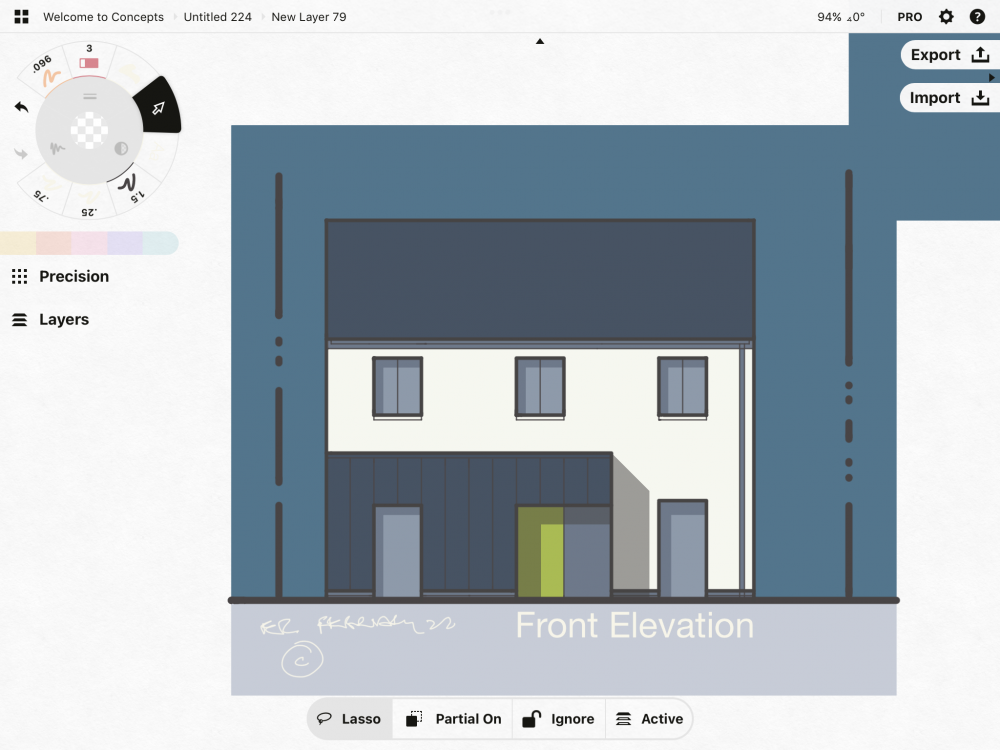
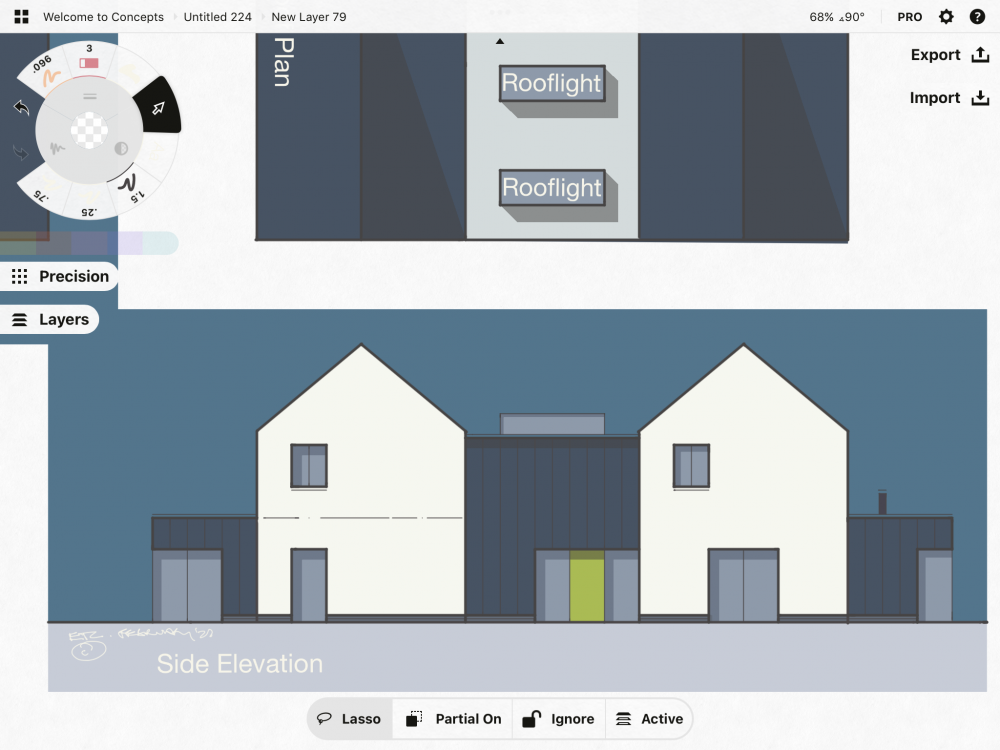

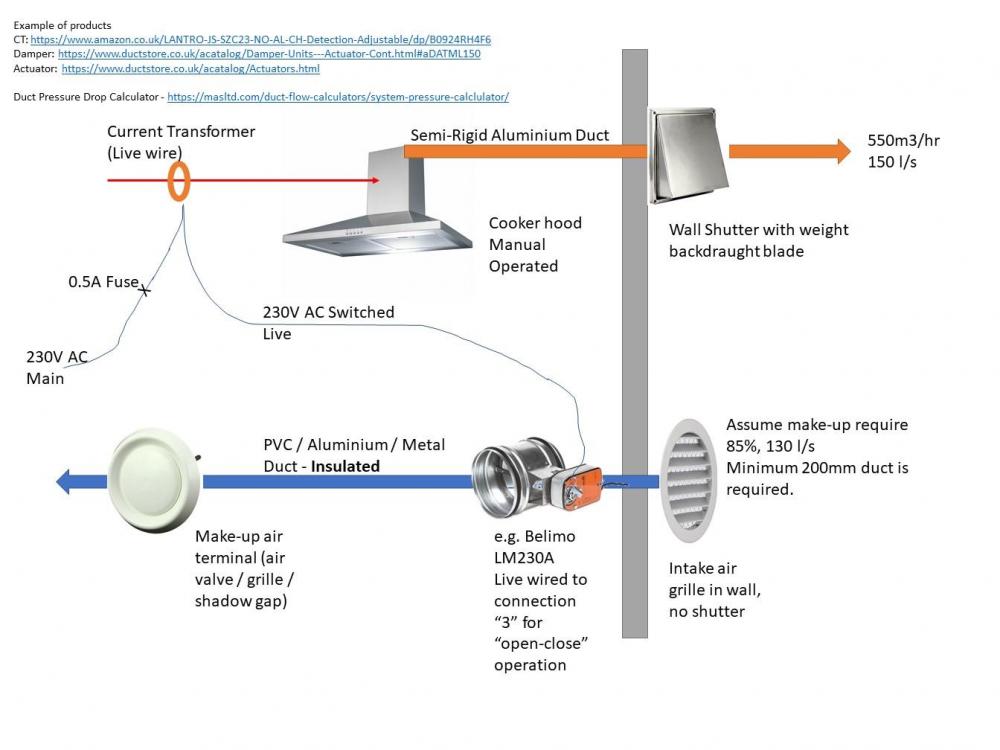
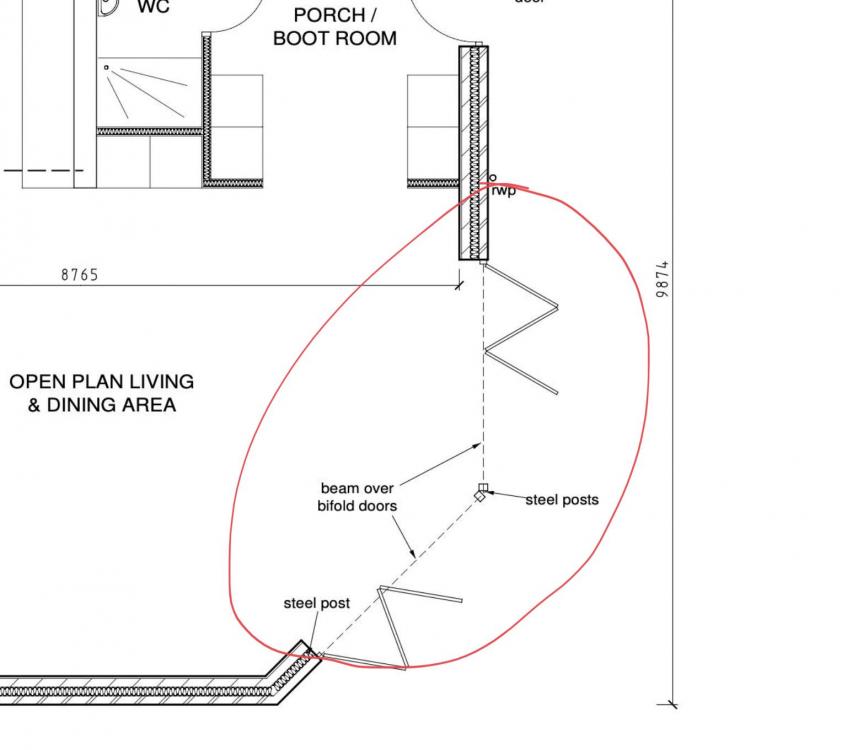

.jpg.c21f3ac78c9b7efd90cbdcb312744dc5.thumb.jpg.7adcad4c0e384f5ecd7d56b0618df6e5.jpg)






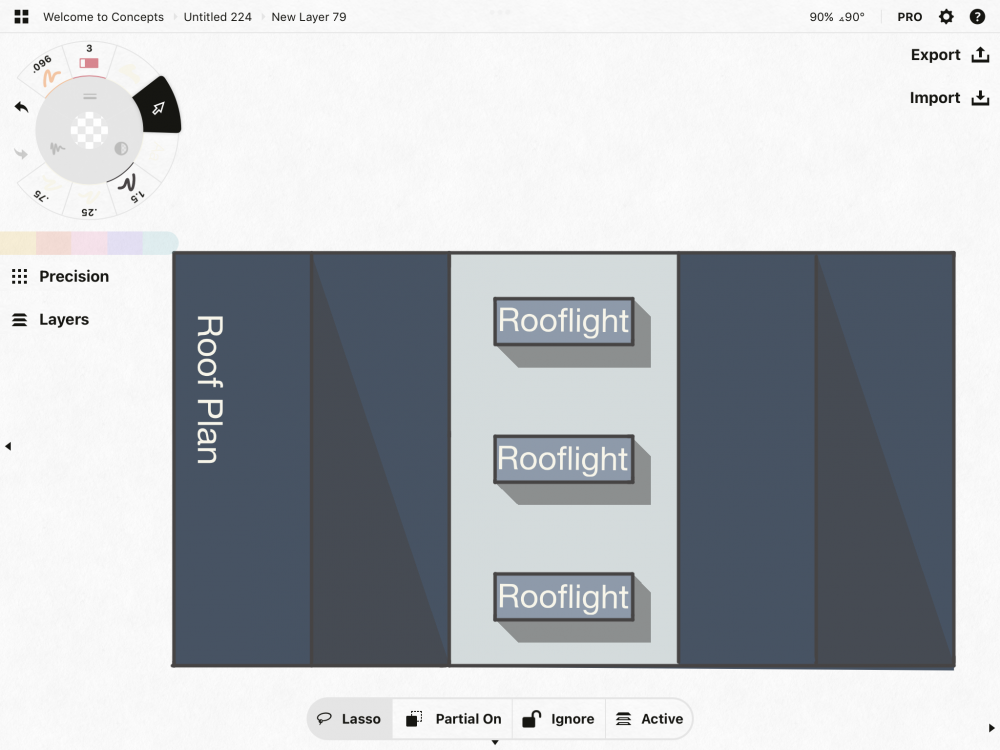



.thumb.jpg.bac90f3bbf6868cf2118d010d936c99d.jpg)



